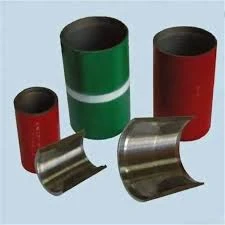- Afrikaans
- Albanian
- Amharic
- Arabic
- Armenian
- Azerbaijani
- Basque
- Belarusian
- Bengali
- Bosnian
- Bulgarian
- Catalan
- Cebuano
- Corsican
- Croatian
- Czech
- Danish
- Dutch
- English
- Esperanto
- Estonian
- Finnish
- French
- Frisian
- Galician
- Georgian
- German
- Greek
- Gujarati
- Haitian Creole
- hausa
- hawaiian
- Hebrew
- Hindi
- Miao
- Hungarian
- Icelandic
- igbo
- Indonesian
- irish
- Italian
- Japanese
- Javanese
- Kannada
- kazakh
- Khmer
- Rwandese
- Korean
- Kurdish
- Kyrgyz
- Lao
- Latin
- Latvian
- Lithuanian
- Luxembourgish
- Macedonian
- Malgashi
- Malay
- Malayalam
- Maltese
- Maori
- Marathi
- Mongolian
- Myanmar
- Nepali
- Norwegian
- Norwegian
- Occitan
- Pashto
- Persian
- Polish
- Portuguese
- Punjabi
- Romanian
- Russian
- Samoan
- Scottish Gaelic
- Serbian
- Sesotho
- Shona
- Sindhi
- Sinhala
- Slovak
- Slovenian
- Somali
- Spanish
- Sundanese
- Swahili
- Swedish
- Tagalog
- Tajik
- Tamil
- Tatar
- Telugu
- Thai
- Turkish
- Turkmen
- Ukrainian
- Urdu
- Uighur
- Uzbek
- Vietnamese
- Welsh
- Bantu
- Yiddish
- Yoruba
- Zulu
Understanding the API Tubing and Casing Chart for Oil and Gas Industry Applications
Understanding API Tubing and Casing Charts A Comprehensive Overview
In the oil and gas industry, the safety and efficiency of drilling operations largely depend on the proper selection and use of tubing and casing materials. One essential resource that assists engineers and drillers in making informed decisions is the American Petroleum Institute (API) tubing and casing chart. This chart provides critical specifications and standardized dimensions for various types of tubing and casing utilized in drilling activities.
What is Tubing and Casing?
Before delving into the specifics of the API chart, it is imperative to understand the difference between tubing and casing. Casing serves as the structural framework within the wellbore, usually installed after drilling. It stabilizes the well and protects it from collapses while preventing unwanted fluids from entering the well. Tubing, on the other hand, is the pipe through which oil and gas are brought to the surface following production.
Overview of API Standards
The American Petroleum Institute is a leading organization that sets industry standards for oil and gas operations. Its specifications cover various products and processes, ensuring safety and effectiveness in drilling and production methods. The API standards for tubing and casing include parameters such as size, weight, grade, and tensile strength, which are essential for ensuring that the materials can withstand the extreme pressures and conditions encountered during drilling and production.
Deciphering the API Tubing and Casing Chart
The API tubing and casing chart classifies products based on their dimensions, allowing for quick reference when choosing the right materials for specific drilling projects. Each entry in the chart includes details like nominal size, outside diameter (OD), wall thickness, and weight per unit length. The chart categorizes tubing and casing into different grades which fundamentally determine their strength and corrosion resistance properties—key factors when selecting the appropriate material for a specific borehole environment.
Categories and Grades
api tubing and casing chart

The tubing and casing are categorized into various grades, such as K55, J55, and N80, which denote their yield strength and tensile properties. For instance
- J55 This grade is commonly used for shallow oil and gas wells due to its lower yield strength. - K55 Slightly stronger than J55, this grade is preferred in medium-depth applications. - N80 This type offers higher strength and is often utilized in more complex environments where durability is paramount.
Choosing the correct grade is vital because it directly affects not only the integrity of the well but also the safety and cost-effectiveness of the drilling operation.
Application of the Chart in Drilling Operations
Drilling engineers rely heavily on the API tubing and casing chart during the planning phase of drilling operations. By understanding the environmental conditions and the physical properties of the formations being drilled, they can meticulously select the appropriate tubing or casing that ensures sustainability and mitigates the risk of failure.
Additionally, advancements in technology and materials are continuously being integrated into the API standards. Therefore, staying updated with the latest specifications is crucial for companies aiming to improve efficiency and safety in their operations.
Conclusion
The API tubing and casing chart is an invaluable tool in the oil and gas industry, providing essential guidelines for selecting the appropriate materials for drilling operations. By understanding the various grades and specifications outlined in the chart, engineers and drillers can enhance the safety, efficiency, and overall success of their drilling projects. In an industry where the margin for error is minimal, having quick access to standardized information can mean the difference between success and failure in drilling operations.
-
Tubing Pup Joints: Essential Components for Oil and Gas OperationsNewsJul.10,2025
-
Pup Joints: Essential Components for Reliable Drilling OperationsNewsJul.10,2025
-
Pipe Couplings: Connecting Your World EfficientlyNewsJul.10,2025
-
Mastering Oilfield Operations with Quality Tubing and CasingNewsJul.10,2025
-
High-Quality Casing Couplings for Every NeedNewsJul.10,2025
-
Boost Your Drilling Efficiency with Premium Crossover Tools & Seating NipplesNewsJul.10,2025







